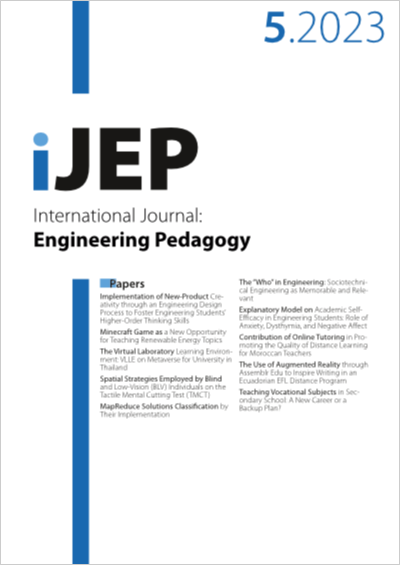The “Who” in Engineering: Sociotechnical Engineering as Memorable and Relevant
DOI:
https://doi.org/10.3991/ijep.v13i5.36571Keywords:
sociotechnical thinking, qualitative methods, card sort, student perception, memorable, culturally inclusive pedagogiesAbstract
Does emphasizing the role of people in engineering influence the memorability of engineering content? This study is part of a larger project through which our team developed a new undergraduate energy course to better reflect students’ cultures and lived experiences through asset-based pedagogies to help students develop a sociotechnical mindset in engineering problem solving. In this study, students in the class were invited to participate in semi-structured interviews (n=5) to explore our effectiveness in helping them develop a sociotechnical mindset around energy issues and conceptualize engineering as a sociotechnical endeavor. This study focuses on an activity during the interview where the participants were asked to sort a variety of images associated with class learning experiences along a spectrum of least to most memorable. Emergent themes from students’ responses revolved around learning experiences that included global perspectives and emphasized a “who” (i.e., whose problems, who is impacted by engineering, and what type of engineers the students will choose to become) as the most memorable. Our results indicate that students found the sociotechnical aspects of the course more memorable than the traditional canonical engineering content. These findings suggest that framing engineering content as sociotechnical can be one strategy to increase student engagement, increase memorability of lessons, and help students to think more deeply about their own goals as future engineers.
Downloads
Published
How to Cite
Issue
Section
License
Copyright (c) 2023 Diana A. Chen, Marissa H. Forbes, Gordon D. Hoople, Susan M. Lord, Joel Alejandro Mejia

This work is licensed under a Creative Commons Attribution 4.0 International License.



